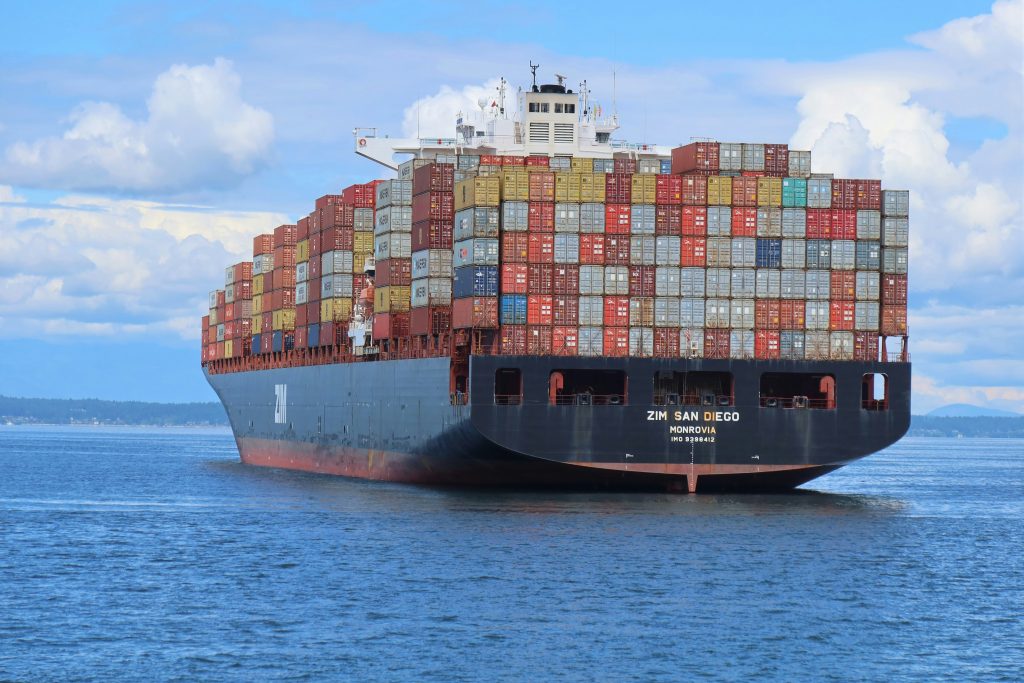
In 1948 Malcom Mclean was the owner of the “Mclean Trucking Co.” and his business had grown rapidly in recent years. But the logistics between the different modes of transport – rail, road and sea – was a problem for which no one seemed to have a solution.
His lorry drivers had been complaining about the terrible conditions at the port of Hoboken in New Jersey. The almost endless waiting times for loading and unloading the ships were getting longer every year and costing his company a lot of money. Malcom decided to go to the harbour and see what he could do.
When he arrived, he saw his men loading the freighter ‘Lady Valeen.’ The large wooden crates were unloaded from his lorries onto the pier and packed into large nets, which were then loaded by the ship’s cargo cranes over the pier directly through the open hatches into the belly of the ship. In the belly of the ship, the stevedores worked diligently to load the endless wooden crates evenly and safely.
It was hard work, both on the quay and in the cargo hold.
And, although one net after another came on board, it seemed to take forever for the huge ship to be fully loaded and ready to start its journey to its destination.
Additionally, he was concerned with the slow loading process and how difficult it was to get the huge number of wooden crates from the pier into the ship. Even though ship’s holds would be fully loaded, the entire deck was empty.
He was faced with two problems: (1) long waiting times and (2) how could the huge deck of a ship be more fully utilised?
He realised that a clever idea was urgently needed, as the volume of cargo was increasing year by year and the ships (and therefore the decks) were getting bigger and bigger.
Wouldn’t it be possible to bring the whole lorry onto the ship? But that would have the disadvantage that this lorry could not be used for other journeys during the entire ship passage and the capital commitment would be far too high. What if he only loaded the trailer onto the ship? That would be impractical because it would take up extra space. And wooden crates on deck were useless.
Over the next few years, he thought a lot about this issue until he came up with a revolutionary solution:
As a first step, Mclean replaced all his various large wooden crates with standardised crates made of old steel. This metal crate was strong and durable and protected the contents from rain and dirt and was also easy to stack, both on his lorries and on the deck of a ship. In 1955, he bought the decommissioned oil tanker. He began to convert it specifically for his metal crates.
On 26 April 1956, the said oil tanker sailed from Newark, New Jersey to Houston, Texas on a test run with 58 standardised steel containers, confirming the feasibility of Malcom’s idea. The consequences were enormous! The idea of replacing wooden crates with standardised metal crates revolutionised the entire transportation and logistics industry and laid the foundations for modern trade in bulk goods, significantly reducing transport costs.
Today, around 15 million of these steel crates each 20 -40 feet (12-24m) long are in use worldwide, and large container ships can transport up to 24,000 containers at a time.
If you also have one or more issues for which there is no solution in sight, we would be encouraged to combine it with another problem, just to find a collective solution for all! And as a service provider for private individuals and companies, we also endeavour to find an appropriate structure for your challenges.
At CAREY ZURICH, we are specialist in setting up and managing advantageous structures for our customers and we would be pleased to establish a private structure in the form of a company, trust, foundation or whatever is suitable. We are committed to serving the needs of our customers with all the Swiss thoroughness and reliability that you would expect, because we care(y).
 Beat Haering – CEO
Beat Haering – CEO
Adresse :
PO Box 3071 Alderstrasse 49
Zurich 8034 Switzerland
Telephone : +41 43 499 11 44
Fax :+41 43 499 11 55
Email : beat.haering@carey.ch
Website : https://carey.ch/
This is an abridged version of the original. The original can be found on the carey website
| Carey Zurich
The Company, established in 2003, is an owner-managed Multi-Family Office and FINMA-licensed trustee company providing tailor-made functional structures to private clients, international families and corporates. Our clients can count on Swiss quality, high ethical standards, efficiency and trust – because we care(y). As the holder of a professional Swiss trustee license, the company is supervised by the Swiss Market Supervisory Authority FINMA. Carey AG Alderstrasse 49, 8008 Zürich T: + 41 (0)43 499 11 44 www.carey.ch |
